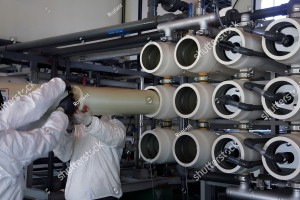Ultrafiltration (UF): A Key Solution for Water Filtration
October 18, 2024
Introduction to Ultrafiltration (UF) Ultrafiltration (UF) membranes filtration process that plays a critical role in water purification and wastewater treatment. UF membranes have pore sizes ranging from 0.01 to 0.1 microns, which allows them to remove suspended solids, bacteria, and some viruses from water, making it a versatile solution for many industries.
How Does Ultrafiltration Work? Ultrafiltration operates as a pressure-driven process:
- Feed water is forced through a semi-permeable membrane.
- Larger particles, such as bacteria, viruses, and suspended solids, are retained on the membrane surface.
- Clean water (permeate) passes through the membrane, leaving contaminants behind.
Key Benefits of Ultrafiltration

- High Efficiency: UF membranes can remove over 90% of pathogens and suspended solids, ensuring safe, high-quality water.
- Energy Savings: UF systems operate at lower pressures compared to reverse osmosis (RO) systems, resulting in reduced energy consumption.
- Cost-Effective: UF provides an economical solution with low operating costs and easy maintenance.
- Flexible Applications: UF membranes are suitable for both industrial water treatment and residential water purification systems.
Applications of Ultrafiltration
- Drinking Water Treatment: UF systems are used in municipal plants to produce safe drinking water.
- Pretreatment for Reverse Osmosis (RO): UF serves as an effective pretreatment stage in desalination plants, enhancing the performance of RO membranes.
- Industrial Water Filtration: UF is widely used in industries such as pharmaceuticals, food and beverage, and power generation to purify process water and treat wastewater.
Overcoming Ultrafiltration Challenges Despite the efficiency of UF, fouling remains a common issue. However, regular cleaning protocols, optimized membrane designs, and advanced operational strategies have significantly reduced membrane fouling, ensuring long-term performance.





 Language
Language




 Network Supported
Network Supported